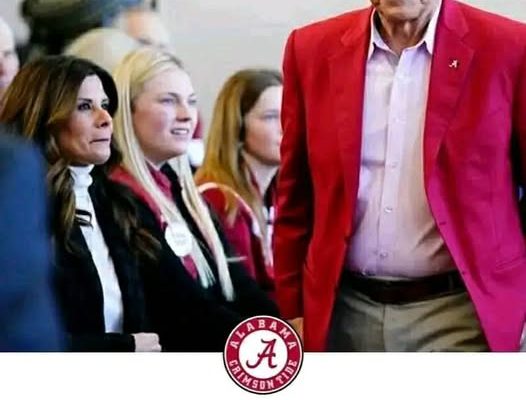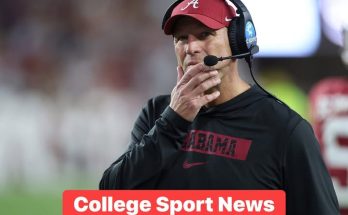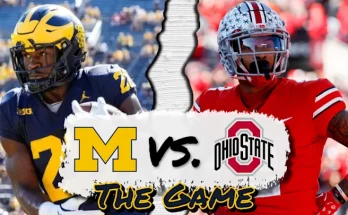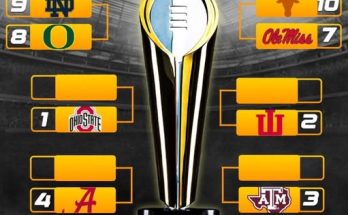In a move that has rocked the entire college football landscape to its very core, Nick Saban — the legendary architect of Alabama’s modern dynasty — has stunned fans, players, rivals, and analysts alike with his decision to come out of retirement and return to the sidelines for the Crimson Tide. What was once considered an impossibility has now become a reality, with the 72-year-old Hall of Famer making one of the most unprecedented comebacks in sports history. As news of his return spread like wildfire, the reaction from the college football world has been nothing short of pandemonium. For many, it feels like history is repeating itself — and for Alabama fans, it’s as if Christmas came early.
Saban’s retirement in early 2024 marked the end of an era. After 17 seasons at Alabama, seven national titles (six with the Tide and one with LSU), and the creation of one of the most imitated football cultures in American sports, the coaching legend stepped down, citing a desire to spend more time with his family and enjoy life beyond the sidelines. His departure felt like a seismic shift. Tributes poured in from every corner of the sport, with current and former players, rival coaches, broadcasters, and university administrators paying homage to his unmatched career. When Alabama moved forward with a new head coach — one that many assumed would carry the torch into a post-Saban world — few could have predicted the events that would unfold just over a year later.
But now, that torch is back in Saban’s hand.
The circumstances surrounding Saban’s return are still unfolding, but what is clear is that Alabama’s 2024 season did not go as planned. The team finished with a modest 9-4 record, including disappointing losses to Georgia, Ole Miss, and a bowl defeat to Michigan State. While not catastrophic by most programs’ standards, for Alabama, it was a wake-up call. Fan frustrations grew louder, and questions began to mount about whether the culture and intensity that Saban had instilled over nearly two decades were already slipping away. The program that had once struck fear into opponents suddenly looked vulnerable, and for Saban, watching from the outside may have been more painful than he ever imagined.
Sources close to the university report that conversations between Saban and Alabama Athletic Director Greg Byrne intensified in recent weeks, especially following several key decommitments in recruiting and a rumored locker room disconnect. It became apparent that Alabama was at risk of a more prolonged decline if something drastic didn’t happen. That “something” turned out to be Saban himself.
The reaction from players — both current and former — was instantaneous and electric. Within minutes of the announcement, social media exploded. Former Alabama stars like Bryce Young, Derrick Henry, and Minkah Fitzpatrick took to Twitter and Instagram to express their joy and disbelief. Several top high school recruits, who had previously decommitted or considered flipping their commitments, immediately reversed course and reaffirmed their allegiance to the Tide. Alabama’s recruiting class, once slipping outside the top ten for the first time in over a decade, surged back into the national spotlight overnight.
College football analysts across ESPN, FOX Sports, and CBS were caught completely off guard. Paul Finebaum, the longtime SEC pundit and close observer of the Alabama program, called it “the biggest surprise of my career covering college football.” Kirk Herbstreit, speaking live on-air, said simply, “I’ve never seen anything like this.” Others compared Saban’s return to Michael Jordan’s famous fax that read, “I’m back.” But even that analogy may fall short of capturing just how stunning this comeback truly is.
There’s also been significant reaction from rival fanbases and coaches, many of whom had quietly celebrated Saban’s retirement as the beginning of a new era of parity in the SEC. Georgia’s Kirby Smart — Saban’s former protégé turned rival — now faces the return of his old mentor, just as he was beginning to solidify his place as college football’s top coach. LSU’s Brian Kelly, Tennessee’s Josh Heupel, and Texas A&M’s Mike Elko now have to recalibrate their plans for SEC dominance. The empire they thought had fallen has risen once more — and perhaps stronger than ever.
But beyond the spectacle, there are very real football implications to Saban’s return. For one, the current coaching staff will undergo major reconfiguration. Sources confirm that Saban is bringing back several former assistants, including names like Lane Kiffin and Jeremy Pruitt, in various advisory roles. While nothing is official yet, there are whispers that even Bill O’Brien may return to assist in offensive game planning. With the introduction of new NCAA rules around recruiting, NIL, and player movement, Saban’s vast experience and organizational mastery could serve as the ultimate stabilizer during a period of chaos in college athletics.
Critics, however, are already questioning the sustainability of such a move. At 72, can Saban handle the physical and mental toll of another season — or more — at the helm of one of college football’s most demanding programs? His supporters argue that if anyone can defy expectations, it’s Saban. Throughout his career, he has constantly adapted — from changes in offensive philosophy to handling the transfer portal and NIL — and continued to win at the highest level. This latest move may be his boldest adaptation yet.
And then there’s the fan base — the heartbeat of Alabama football — which has responded with an outpouring of emotion that rivals national championship celebrations. Tuscaloosa erupted with spontaneous celebrations, with fans gathering outside Bryant-Denny Stadium waving Alabama flags, lighting fireworks, and chanting Saban’s name. Local businesses began selling new “Welcome Back, Coach” merchandise within hours. The Alabama faithful, who had braced themselves for the slow fade of post-Saban success, now have reason to believe that the dynasty has new life.
Inside the program, the energy shift has been palpable. Players reportedly received the news during a surprise meeting with Saban himself, who entered the team facility flanked by university officials. Eyewitness accounts describe an emotional scene, with players cheering, hugging, and some even tearing up. For the returning veterans, the opportunity to once again play for the coach who recruited and developed them is an unexpected gift. For younger players, it’s the chance to learn from the greatest to ever do it.
But perhaps the most fascinating aspect of this comeback is what it means for Saban’s legacy. By returning, he risks tarnishing an already perfect résumé. He had nothing left to prove — and yet he’s chosen to put everything on the line once again, not for personal glory, but to protect and revive the empire he built. It’s a gamble that few legends are willing to make, but then again, Saban has never been like anyone else in sports history.
This return isn’t just about one man coaching again. It’s about leadership, culture, and the idea that greatness doesn’t have to fade quietly into the night. It’s about a man who has given everything to a game and is now giving just a little bit more — not for accolades, but for legacy, pride, and love of the process. It’s about a program reclaiming its identity, not with gimmicks or shortcuts, but by returning to its roots — with the man who planted them.
No one knows how long Saban will be back. Maybe it’s for one final season. Maybe it’s the beginning of a second chapter that no one saw coming. What is certain, however, is that college football just became infinitely more compelling. The standard has returned. And with it, so has the fear, respect, and awe that Nick Saban has commanded for decades.
Whether you love or hate Alabama, one thing is undeniable — the king is back on his throne. And the rest of the college football world must now prepare for what could be the most dramatic and defining season in modern history.



